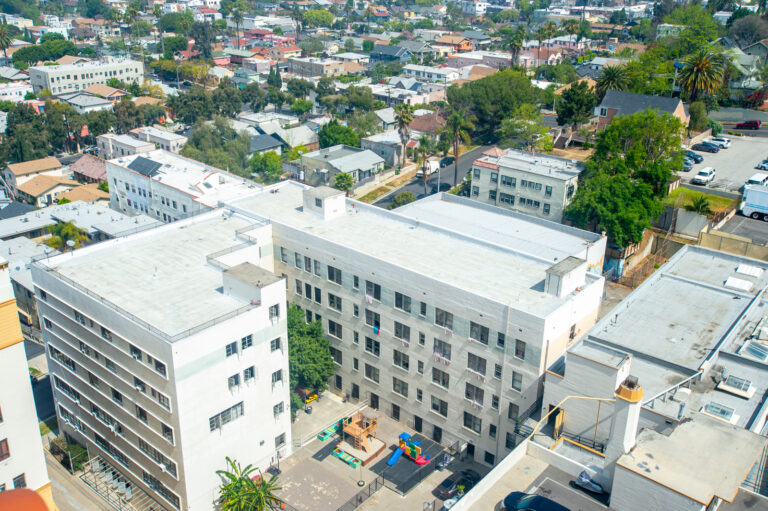Cities can slash homeless housing costs by ditching subsidies
by John Seiler | May 10, 2024
Why reject government subsidies? After all, everyone pays huge amounts in taxes. Might as well get some of it back.
But that’s just what’s happening in California’s housing crisis. In part of a new trend, SDS Capital Group is building 49 non-subsidized low-income housing units in South Los Angeles for just $291,000 a unit, reported The Wall Street Journal. That’s one of the city’s poorest areas. Subsidies still go to the individual renter from Section 8 vouchers and other programs. But the crucial need, construction, is private.
SDS Capital’s cost is less than half the $600,000 per unit cost for building 4,500 apartments financed by Measure HHH, the $1.2 billion Homelessness Reduction and Prevention Housing and Facilities Bond Issue. Voters passed it by 77% to 33%. Since then, the number of LA’s homeless has increased by 60%, to 46,260 in 2023.
HHH is paid for by raising property taxes $9.64 per $100,000 of assessed value; or $96.40 a year for typical house assessed at $1 million. Higher taxes discourage producing more of something, in this case housing. They also establish an atmosphere of uncertainty – of anticipating yet higher taxes. Which hit in 2022 with Proposition ULA, a 4% tax on the sale of properties of $5 million or more; and 5.5% on sales of $10 million or more. It funds more programs for the homeless.
On top of all that, the state income tax on millionaires this year jumped from 13.3% to 14.4%. Even the middle-class suffered an increase, from 9.3% to 10.4%. Taxes have consequences. If housing construction and sales are discouraged for rich people that will trickle down to cheaper houses, eventually all the way down to houses for the poor.
It’s obvious switching to a private system of construction would double the number of units per dollar spent, especially if other government regulations were reduced. The problem is too many interests benefit from the existing system, beginning with the politicians who pushed HHH and ULA to demonstrate they are “doing something.”
“Government agencies providing assistance and subsidies to the developer of low-income housing require that they hire union workers, so labor costs mushroom immediately,” Raymond Sfeir told me; he’s the director of the A. Gary Anderson Center for Economic Research at Chapman University in Orange, Calif. “Such a requirement does not tie the hands of a developer who does not accept government assistance.”
The main hindrance is Project Labor Agreements, which mandate union-level wages even for non-union workers. A friend of mine in the construction industry tells me that when his company takes on a PLA the $35 average cost per worker more than doubles to above $70. Plus special companies are hired to make sure the government paperwork is filled out right and doesn’t bring fines, increasing the overall cost.
Measure HHH didn’t include a PLA requirement. But the City Council added one afterward, effectively swindling the voters. A 2021 Rand Corporation study of HHH found, “The PLA added approximately $43,000 per housing unit to projects covered by the agreement – a 14.5% increase in construction costs.” And 800 more units could have been built without the PLAs.
PLAs are just the beginning of the mountain of paperwork needed for subsidized housing construction. “The case can become even more complex if the developer seeks assistance from several government agencies,” Sfeir said. “Each one will have its own regulations. Figuring out what these regulations are, and abiding by them, increases the cost of the project and delays its completion.”
Another problem was uncovered last month by California State Auditor Grant Parks in a widely discussed study that found, “The State lacks current information on the ongoing costs and outcomes of its homelessness programs.” More than $24 billion in state funds were spent to reduce homelessness from 2018-19 through 2022-23. Despite all that largesse, the number of homeless soared, from 118,552 in 2013 to 181,399 in 2023. That was a 53% increase in just a decade, during a time of prosperity, excepting only the 2020 COVID year.
The study came out just weeks after state voters narrowly approved Proposition 1, another bond for homeless programs, which this time will spend $6.4 billion.

On the positive side, The Wall Street Journal reported, “Privately financed affordable-housing projects also benefit from recent changes in state law and local regulations that have streamlined approvals and raised unit maximums for projects serving low-income residents, transit-rich neighborhoods and the homeless population.” As Gov. Gavin Newsom boasted in Oct. 2021 when he signed more than two dozen housing reform bills, “This package of smart, bipartisan legislation boosts housing production in California – more streamlining, more local accountability, more affordability, more density.”
It should be obvious what needs to be done by cities, counties and the state: Stop spending tax dollars on housing construction, repeal HHH, ULA and other taxes for housing and homeless programs and reduce regulations to make it much easier to build not just low-income housing, but housing of all kids. In particular, while some reforms have been enacted for the state’s onerous California Environmental Quality Act (CEQA), a thorough overhaul still is needed.
Planners decades ago abandoned government-run public-housing “projects,” such as the infamous, crime-infested Cabrini-Green Homes in Chicago. The government operation of housing by cities doesn’t work here any better than it did in the Soviet Union. But the taxpayer subsidy of housing under the auspices of private owners isn’t working all that well either, largely because powerful labor unions demand their cut.
What cities can do is abandon the subsidy model and instead clear the way for private, unsubsidized capital to come in and build much-needed housing. That’s what works. The Journal article proves it.
John Seiler is on the Editorial Board of the Southern California New Group.


